- Home
- Robert A. Heinlein
Waldo, and Magic, Inc
Waldo, and Magic, Inc Read online
Table of Contents
"Watermelon and Mustard" by William H. Patterson, Jr.
Waldo
Magic, Inc.
Trailblazing in the Irrational by Tim Powers
Waldo & Magic, Inc.
Robert A. Heinlein
Waldo
North Power—Air is in trouble. Their aircraft are crashing at an alarming rate, and no one can figure out the cause. Desperate for an answer, they turn to Waldo, a crippled genius who lives in a zero—g home in orbit around Earth. But Waldo has little reason to want to help the rest of humanity—until he learns that the solution to Earth’s problems also hold the key to his own.
Magic, Inc.
Under the guise of an agency for magicians, Magic, Inc. systematically squeezed out the small independent magicians. Then one businessman stood firm. But one man stands firm. And with the help of an Oxford—educated African shaman and a little old lady adept at black magic, he is willing to take on the demons of Hell to resolve the problem—once and for all!
New introduction by Tim Powers!
BAEN BOOKS
by ROBERT A. HEINLEIN
Assignment in Eternity
Beyond This Horizon
Between Planets
Farmer in the Sky
Farnham’s Freehold
The Green Hills of Earth & The Menace from Earth (omnibus)
The Man Who Sold the Moon
Orphans of the Sky
The Man Who Sold the Moon and Orphans of the Sky (omnibus)
The Menace from Earth
Revolt in 2100 & Methuselah’s Children
Expanded Universe
The Rolling Stones
The Puppet Masters
Starman Jones
Sixth Column
The Star Beast
Waldo & Magic, Inc.
WALDO & MAGIC, INC.
This is a work of fiction. All the characters and events portrayed in this book are fictional, and any resemblance to real people or incidents is purely coincidental.
Copyright © 1940, 1942, 1950 by Robert A. Heinlein, © 2003 by The Robert A. and Virginia Heinlein Prize Trust. Introduction copyright © 2014 by William H. Patterson Jr.. Afterword copyright © 2014 by Tim Powers.
All rights reserved, including the right to reproduce this book or portions thereof in any form.
A Baen Book
Baen Publishing Enterprises
P.O. Box 1403
Riverdale, NY 10471
www.baen.com
ISBN: 978-1-4767-3635-8
eISBN: 978-1-62579-269-3
Cover art by Bob Eggleton
First Baen paperback printing, April 2014
Distributed by Simon & Schuster
1230 Avenue of the Americas
New York, NY 10020
Library of Congress Cataloging-in-Publication Data
Heinlein, Robert A. (Robert Anson), 1907-1988.
[Waldo]
Waldo & Magic, Inc. / by Robert A. Heinlein.
pages cm.
ISBN 978-1-4767-3635-8 (pbk.)
1. Magic--Fiction. 2. Space travelers--Fiction. I. Heinlein, Robert A. (Robert Anson), 1907-1988. Magic, inc. II. Title. III. Title: Waldo and Magic, Inc. IV. Title: Waldo. V. Title: Magic, inc.
PS3515.E288W35 2014
813'.52--dc23
2014000097
Printed in the United States of America
10 9 8 7 6 5 4 3 2 1
Electronic Version by Baen Books
www.baen.com
To John and Doña
“Watermelon and Mustard”
by William H. Patterson, Jr.
The atomic bombs used on Hiroshima and Nagasaki in August 1945 provoked a surge of interest in science fiction as a communications channel between the new sciences and the general public—but the big, established publishing houses were slow to take advantage of the demand: who knew how long this sudden fad would last?
Doubleday & Co., younger, nimbler and less burdened than its competitors with a reputation to protect, decided to get in on the bonanza. The editor for Doubleday’s new SF line approached Heinlein for a reprint collection and finally settled on two of Heinlein’s prewar novellas, “Waldo” (Astounding, 1942) and “The Devil Makes the Law” (Unknown, 1940).
This selection puzzled Heinlein, as the two stories had virtually nothing in common, not even genre. “Waldo” was science fiction, albeit of an offbeat sort: an eccentric mashup of Nikola Tesla’s broadcast power with some of the weirder implications of cutting-edge quantum mechanics (experimental results seemed to depend on what the experimenter expected to see). “The Devil Makes the Law” was an unambiguous fantasy, albeit a fantasy of a new type, about “white magic” treated as industrial technology woven into the routine background of business and “black magic” become a tool of the criminal underground.
When this story was written (January 1940) the genre that came to be called “Unknown-type fantasy” could hardly be said to exist. Unknown itself had only been in existence for about nine months. The only model for pulp magazine fantasy was “weird fiction” derived from Dunsany and Blackwood. The clarity and ingenuity of “The Devil Makes the Law,” hybridizing fantasy materials with science fiction’s methodology (H.G. Wells’s “domesticate the impossible hypothesis”), made it the type-specimen of a new (sub)genre of fantasy.
This story was also personally important to Heinlein: He had failed to sell any story other than his Future History stories until this story broke the string of rejections.
In 1950, Heinlein restored its title to his original—and smarter—title, “Magic, Incorporated”—but he considered these stories so mismatched, he told his agent, that, “[i]t seems to me that they go together about as well as mustard and watermelon.” It was a headache to come up with a title for the book. He ran through several lackluster possibilities and gave up: the book was published in 1950 with just the titles of the two stories joined together.
Waldo & Magic, Inc. was a commercial success and has been continuously in print for more than sixty years. Evidently, these two novellas did belong together in some fashion Heinlein did not understand in 1950—
—and of course they do, for what “Magic, Inc.” and “Waldo” have in common is that they are both explorations of cognitive boundaries, of the mental cages we erect for ourselves, whose limits we pace out and self-reinforce. This is just the place where the best speculative fiction sets up its tent and settles in for a while (until they have to pull up stakes and set up elsewhere as the new and the strange becomes the comfortable and the familiar).
“Waldo” was still very new and very strange: more than thirty years later, Nikola Tesla’s thinking, especially about broadcast power, was so far off on a tangent from contemporary engineering practice in the age of Edison and Westinghouse (or even the age of Vannevar Bush and Alan Turing and John von Neumann) that his demonstrations seemed supernatural—like magic, like natural laws turned on their head. He was photographed in his Colorado Springs laboratory, with electrical discharges arcing around him, positioning him (for public consumption) as something mystical, unearthly, godlike. The implied magic-magic of the story’s Pennsylvania hex doctor is puny by comparison.
But put them together . . .
Waldo (with a reverent nod to H.G. Wells’s Pyecraft story) filters Gramps Schneider’s “Other World” through the Participatory Anthropic Principle (and Heinlein’s own youthful background reading in n-dimensional physics and neo-Kantian philosophy), and the world—the cosmos—is changed forever.
This story was written in the opening days of World War II, while Heinlein was living on John Campbell’s couch. His wife was in the hospital. Defeat after defeat by the Japanese in the Pacific bore
in on Americans.
This story reaffirms American exceptionalism in a very Heinleinian, radical individualist way: a single individual mind will reshape the entirety of existence.
“Magic, Inc.” was written two years earlier and under much happier circumstances—but it, too, is a story of radical individualism. The apparent protagonist of the story, Archie, stands for the small-businessman of America, whose small-time lobbying efforts lead him to a role in the cosmic project of Amanda Jedson invading the Hell Universe and challenging Satan himself for dominion. Again, a single individual mind remakes reality.
Heinlein’s radical individualism was fundamental to his character—and a key element to why Heinlein was a “phenom,” why the elements he wrought together were so unusual and unexpected for science fiction as it developed. While science fiction was in formation, this quality was very useful for the community. When SF came to its own maturity, starting in the 1950s, the field came to prize less Heinlein’s unceasing challenging of boundaries: science fiction had developed its own boundaries to protect.
But Heinlein continued to push the boundaries, and soon the general public he trained up valued him more than his colleagues in science fiction.
“Waldo” and “Magic, Inc.” are products of the first flush of Heinlein’s personal innovation, welcomed at the time as an escape from the pulp formulas of ’30s space opera. Both stories are just as fresh and invigorating now, as we find ourselves in the middle of another era hidebound with convention and spiraling in on itself.
Is there a Waldo in the house? Or an Amanda Jedson? Ask again a hundred years from now . . .
(and, no, it does not end. It never ends . . .)
Waldo
The act was billed as a ballet tap—which does not describe it.
His feet created an intricate tympany of crisp, clean taps. There was a breath-catching silence as he leaped high into the air, higher than a human being should—and performed, while floating there, a fantastically improbable entrechats douze.
He landed on his toes, apparently poised, yet producing a fortissimo of thunderous taps.
The spotlights cut, the stage lights came up. The audience stayed silent a long moment, then realized it was time to applaud, and gave.
He stood facing them, letting the wave of their emotion sweep through him. He felt as if he could lean against it; it warmed him through to his bones.
It was wonderful to dance, glorious to be applauded, to be liked, to be wanted.
When the curtain rang down for the last time he let his dresser lead him away. He was always a little bit drunk at the end of a performance; dancing was a joyous intoxication even in rehearsal, but to have an audience lifting him, carrying him along, applauding him—he never grew jaded to it. It was always new and heartbreakingly wonderful.
“This way, chief. Give us a little smile.” The flash bulb flared. “Thanks.”
“Thank you. Have a drink.” He motioned toward one end of his dressing room. They were all such nice fellows, such grand guys—the reporters, the photographers—all of them.
“How about one standing up?”
He started to comply, but his dresser, busy with one slipper, warned him: “You operate in half an hour.”
“Operate?” the news photographer said. “What’s it this time?”
“A left cerebrectomy,” he answered.
“Yeah? How about covering it?”
“Glad to have you—if the hospital doesn’t mind.”
“We’ll fix that.”
Such grand guys.
“—trying to get a little different angle on a feature article.” It was a feminine voice, near his ear. He looked around hastily, slightly confused.
“For example, what made you decide to take up dancing as a career?”
“I’m sorry,” he apologized. “I didn’t hear you. I’m afraid it’s pretty noisy in here.”
“I said, why did you decide to take up dancing?”
“Well, now, I don’t quite know how to answer that. I’m afraid we would have to go back quite a way . . .”
James Stevens scowled at his assistant engineer. “What have you got to look happy about?” he demanded.
“It’s just the shape of my face,” his assistant apologized. “Try laughing at this one: there’s been another crash.”
“Oh, cripes! Don’t tell me—let me guess. Passenger or freight?”
“A Climax duo-freighter on the Chicago-Salt Lake shuttle, just west of North Platte. And, chief—”
“Yes?”
“The Big Boy wants to see you.”
“That’s interesting. That’s very, very interesting. Mac . . .”
“Yeah, chief.”
“How would you like to be Chief Traffic Engineer of North American Power-Air? I hear there’s going to be a vacancy.”
Mac scratched his nose. “Funny that you should mention that, chief. I was just going to ask you what kind of a recommendation you could give me in case I went back into civil engineering. Ought to be worth something to you to get rid of me.”
“I’ll get rid of you—right now. You bust out to Nebraska, find that heap before the souvenir hunters tear it apart, and bring back its deKalbs and its control board.”
“Trouble with cops, maybe?”
“You figure it out. Just be sure you come back.”
Stevens’ office was located immediately adjacent to the zone power plant; the business offices of North American were located in a hill, a good three-quarters of a mile away. There was the usual interconnecting tunnel; Stevens entered it and deliberately chose the low-speed slide in order to have more time to think before facing the boss.
By the time he arrived he had made up his mind, but he did not like the answer.
The Big Boy—Stanley F. Gleason, Chairman of the Board—greeted him quietly. “Come in, Jim. Sit down. Have a cigar.”
Stevens slid into a chair, declined the cigar and pulled out a cigarette, which he lit while looking around. Besides the chief and himself, there were present Harkness, head of the legal staff, Dr. Rambeau, Stevens’ opposite number for research, and Striebel, the chief engineer for city power. Us five and no more, he thought grimly—all the heavyweights and none of the middleweights. Heads will roll!—starting with mine.
“Well,” he said, almost belligerently, “we’re all here. Who’s got the cards? Do we cut for deal?”
Harkness looked faintly distressed by the impropriety; Rambeau seemed too sunk in some personal gloom to pay any attention to wisecracks in bad taste. Gleason ignored it. “We’ve been trying to figure a way out of our troubles, James. I left word for you on the chance that you might not have left.”
“I stopped by simply to see if I had any personal mail,” Stevens said bitterly. “Otherwise I’d be on the beach at Miami, turning sunshine into vitamin D.”
“I know,” said Gleason, “and I’m sorry. You deserve that vacation, Jimmie. But the situation has gotten worse instead of better. Any ideas?”
“What does Dr. Rambeau say?”
Rambeau looked up momentarily. “The deKalb receptors can’t fail,” he stated.
“But they do.”
“They can’t. You’ve operated them improperly.” He sunk back into his personal prison.
Stevens turned back to Gleason and spread his hands. “So far as I know, Dr. Rambeau is right—but if the fault lies in the engineering department, I haven’t been able to locate it. You can have my resignation.”
“I don’t want your resignation,” Gleason said gently. “What I want is results. We have a responsibility to the public.”
“And to the stockholders,” Harkness put in.
“That will take care of itself if we solve the other,” Gleason observed. “How about it, Jimmie? Any suggestions?”
Stevens bit his lip. “Just one,” he announced, “and one I don’t like to make. Then I look for a job peddling magazine subscriptions.”
“So? Well, what is it?”
“We’ve got to consult Waldo.”
Rambeau suddenly snapped out of his apathy. “What! That charlatan? This is a matter of science.”
Harkness said, “Really, Dr. Stevens—”
Gleason held up a hand. “Dr. Stevens’ suggestion is logical. But I’m afraid it’s a little late, Jimmie. I talked with him last week.”
Harkness looked surprised; Stevens looked annoyed as well. “Without letting me know?”
“Sorry, Jimmie. I was just feeling him out. But it’s no good. His terms, to us, amount to confiscation.”
“Still sore over the Hathaway patents?”
“Still nursing his grudge.”
“You should have let me handle the matter,” Harkness put in. “He can’t do this to us—there is public interest involved. Retain him, if need be, and let the fee be adjudicated in equity. I’ll arrange the details.”
“I’m afraid you would,” Gleason said dryly. “Do you think a court order will make a hen lay an egg?”
Harkness looked indignant, but shut up.
Stevens continued, “I would not have suggested going to Waldo if I had not had an idea as how to approach him. I know a friend of his—”
“A friend of Waldo? I didn’t know he had any.”
“This man is sort of an uncle to him—his first physician. With his help I might get on Waldo’s good side.”
Dr. Rambeau stood up. “This is intolerable,” he announced. “I must ask you to excuse me.” He did not wait for an answer, but strode out, hardly giving the door time to open in front of him.

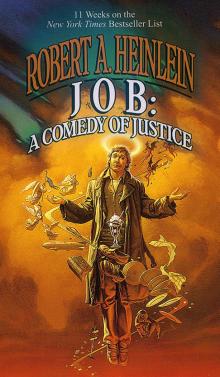 Job: A Comedy of Justice
Job: A Comedy of Justice Stranger in a Strange Land
Stranger in a Strange Land The Worlds Of Robert A Heinlein
The Worlds Of Robert A Heinlein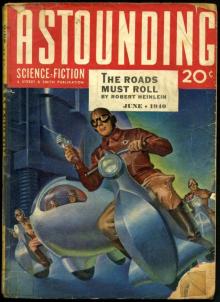 The Roads Must Roll
The Roads Must Roll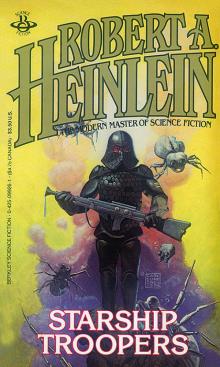 Starship Troopers
Starship Troopers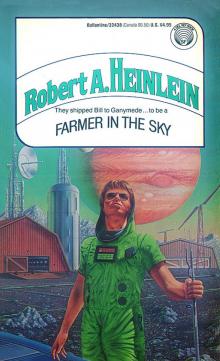 Farmer in the Sky
Farmer in the Sky The Past Through Tomorrow
The Past Through Tomorrow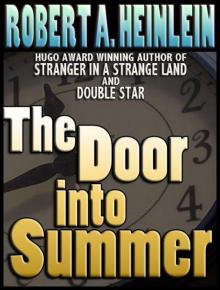 The Door Into Summer
The Door Into Summer All You Zombies
All You Zombies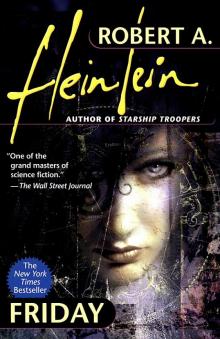 Friday
Friday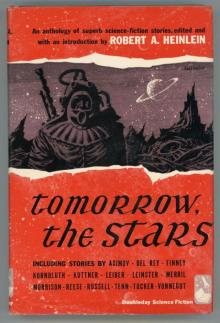 Tomorrow, the Stars
Tomorrow, the Stars The Notebooks of Lazarus Long
The Notebooks of Lazarus Long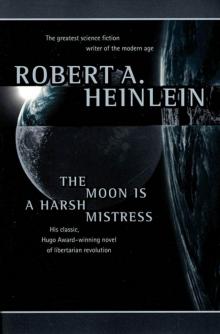 The Moon Is a Harsh Mistress
The Moon Is a Harsh Mistress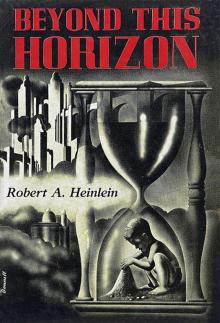 Beyond This Horizon
Beyond This Horizon Time Enough for Love
Time Enough for Love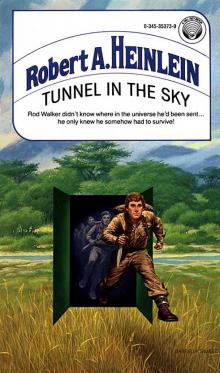 Tunnel in the Sky
Tunnel in the Sky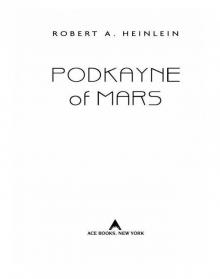 Podkayne of Mars
Podkayne of Mars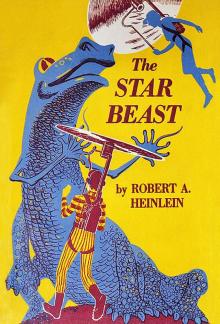 The Star Beast
The Star Beast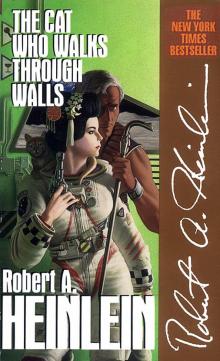 The Cat Who Walks Through Walls
The Cat Who Walks Through Walls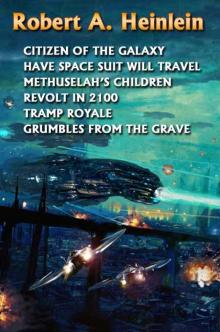 Grumbles From the Grave
Grumbles From the Grave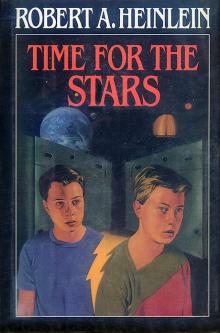 Time for the Stars
Time for the Stars The Number of the Beast
The Number of the Beast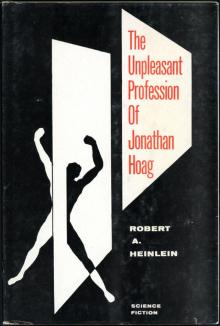 The Unpleasant Profession of Jonathan Hoag
The Unpleasant Profession of Jonathan Hoag Sixth Column
Sixth Column To Sail Beyond the Sunset
To Sail Beyond the Sunset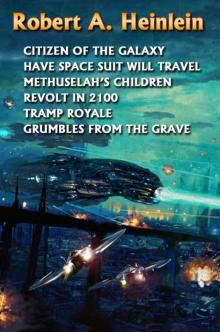 Revolt in 2100
Revolt in 2100 And He Built a Crooked House
And He Built a Crooked House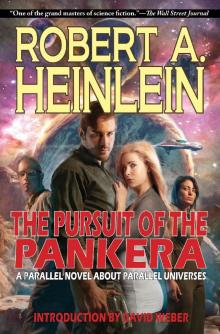 The Pursuit of the Pankera: A Parallel Novel About Parallel Universes
The Pursuit of the Pankera: A Parallel Novel About Parallel Universes Expanded Universe
Expanded Universe Starman Jones
Starman Jones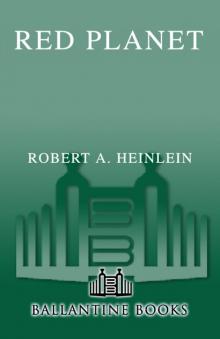 Red Planet
Red Planet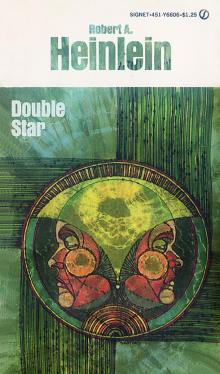 Double Star
Double Star Citizen of the Galaxy
Citizen of the Galaxy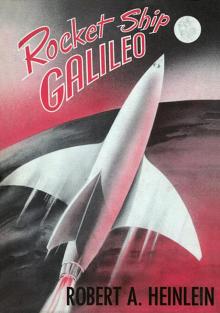 Rocket Ship Galileo
Rocket Ship Galileo Glory Road
Glory Road Farnham's Freehold
Farnham's Freehold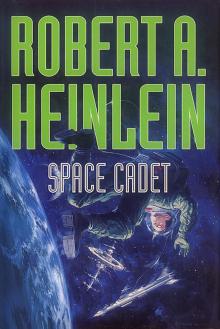 Space Cadet
Space Cadet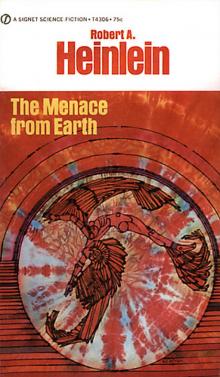 The Menace From Earth ssc
The Menace From Earth ssc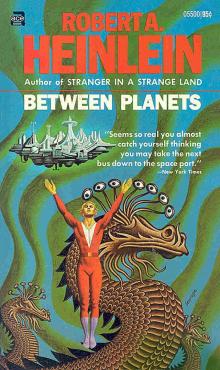 Between Planets
Between Planets Methuselah's Children
Methuselah's Children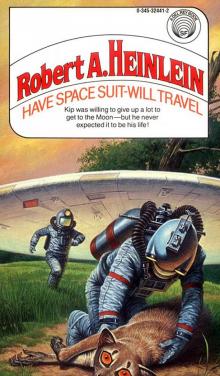 Have Space Suit—Will Travel
Have Space Suit—Will Travel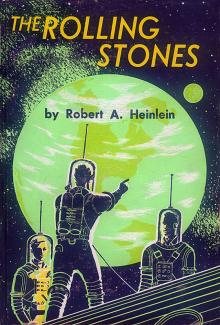 The Rolling Stones
The Rolling Stones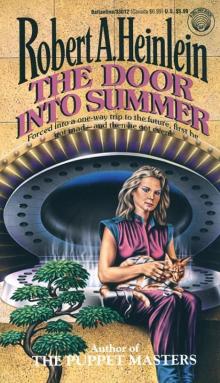 Door Into Summer
Door Into Summer The Cat Who Walked Through Walls
The Cat Who Walked Through Walls Magic, Inc
Magic, Inc Off The Main Sequence
Off The Main Sequence Pied Piper
Pied Piper The Unpleasant Profession Of Jonathan Hoag And Other Stories
The Unpleasant Profession Of Jonathan Hoag And Other Stories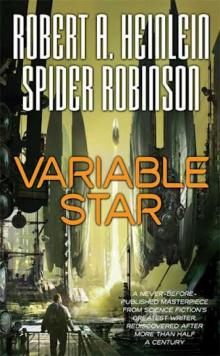 Variable Star
Variable Star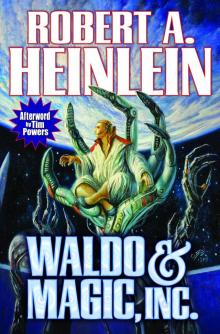 Waldo, and Magic, Inc
Waldo, and Magic, Inc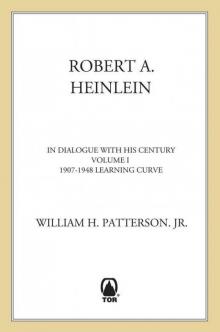 Robert A. Heinlein: In Dialogue With His Century
Robert A. Heinlein: In Dialogue With His Century Waldo
Waldo Bulletin Board
Bulletin Board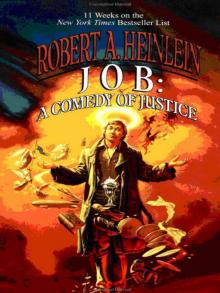 Job: A Comedy
Job: A Comedy Tramp Royale
Tramp Royale A Tenderfoot in Space
A Tenderfoot in Space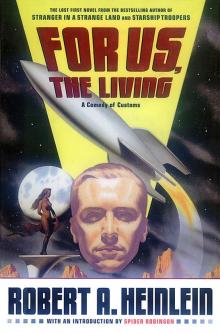 For Us, the Living
For Us, the Living Destination Moon
Destination Moon Logic of Empire
Logic of Empire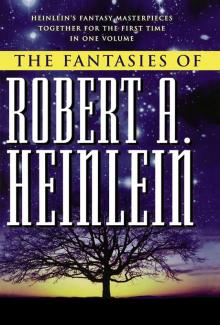 The Fantasies of Robert A. Heinlein
The Fantasies of Robert A. Heinlein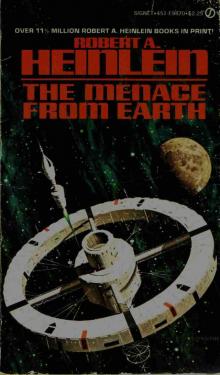 The Menace From Earth
The Menace From Earth From the Notebooks Of Lazarus Long
From the Notebooks Of Lazarus Long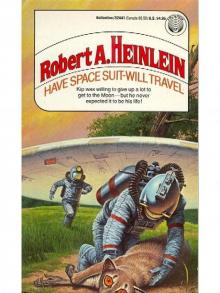 Have Space Suit - Will Travel
Have Space Suit - Will Travel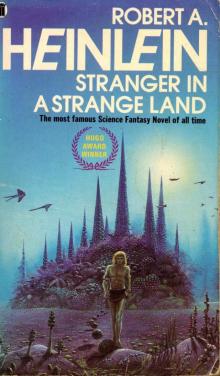 A Stranger in a Strange Land
A Stranger in a Strange Land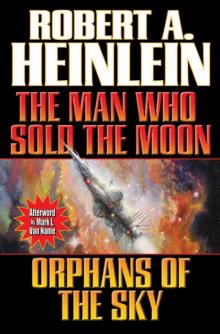 Man Who Sold the Moon / Orphans of the Sky
Man Who Sold the Moon / Orphans of the Sky